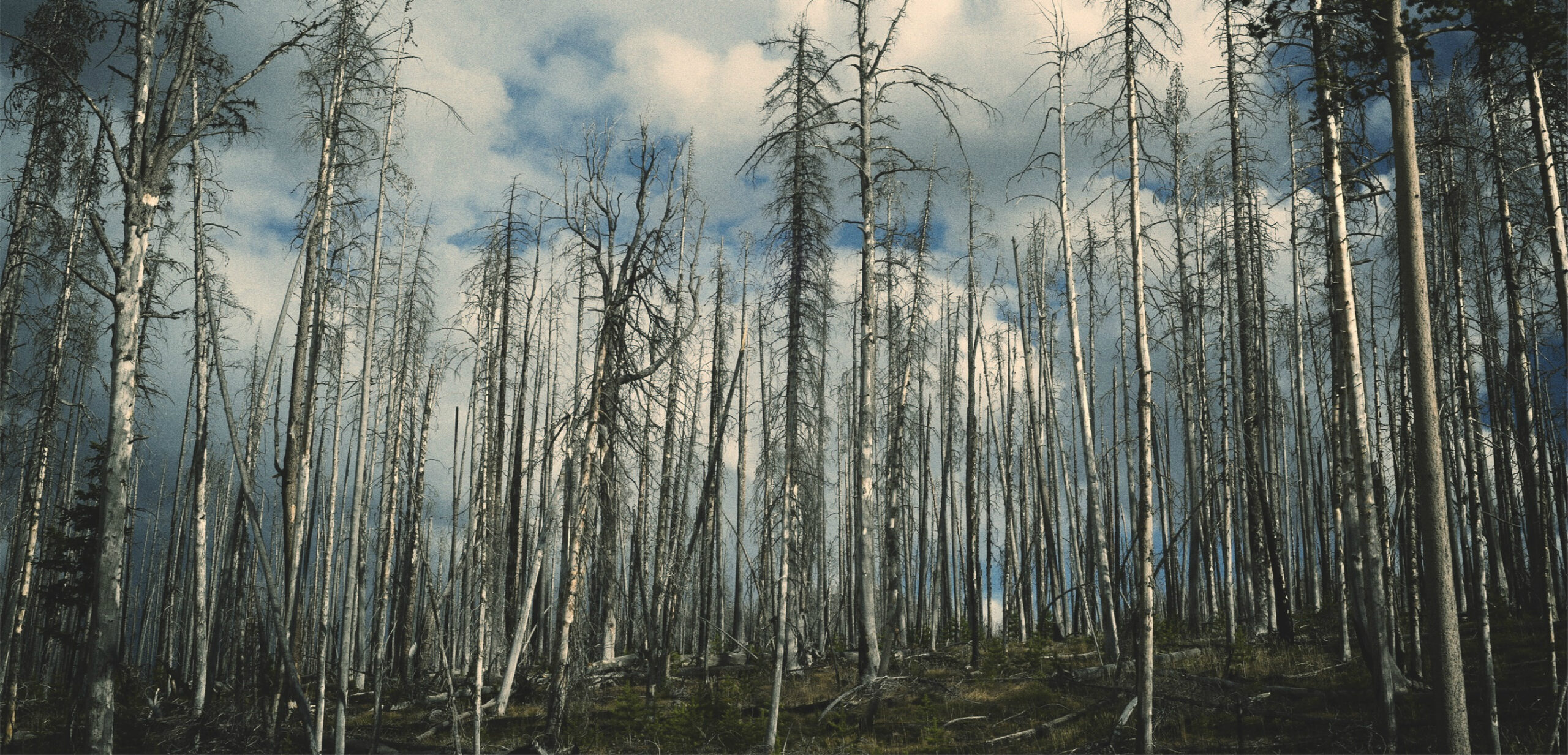
Name
- Common English name: Sirex Wasp
- Other names: Sirex woodwasp
- Latin (scientific) name: Sirex noctilio
History in Canada
- introduced from Eurasia in wood packing material
- first detected in New York State in 2004
- found in southern Ontario in 2005
- now known also in Michigan and Pennsylvania
Biology
- life cycle takes one to two years
- adult wasp has a dark body and wings, and orange-brown legs
- adult size is quite variable: 9-36 mm (3/8-1 ½ in)
- adults are strong fliers and can travel several kms after emerging
- female lays eggs in stems along with toxins and a symbiotic fungus
- larvae are whitish grubs that grow to 30 mm long (1 ¼ in) and have a distinctive tail spike
Impact on Trees
- attacks living trees
- prefers Pine, but will also attack Spruce, Fir, and Douglas Fir
- causes foliage to wilt and turn yellow
- in the Southern Hemisphere, the wasp has caused 80% mortality of pines where it is established
What can be done to control this tree killer?
- a parasitic nematode (Deladenus siricidicola) can be used to infect larvae that then develop into sterile females
- sterile females spread the nematode when they attempt to lay eggs
- several species of parasitic wasp that are native to North America have been introduced into South America as control agents there and these should help control the wasp here
Photo Gallery:
[content_block id=3350]
